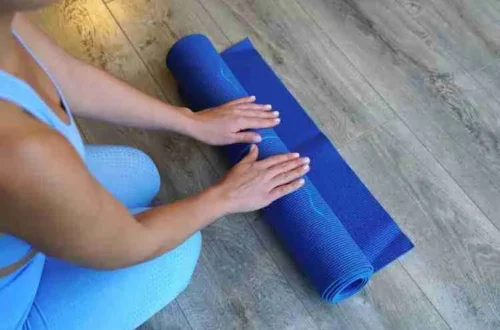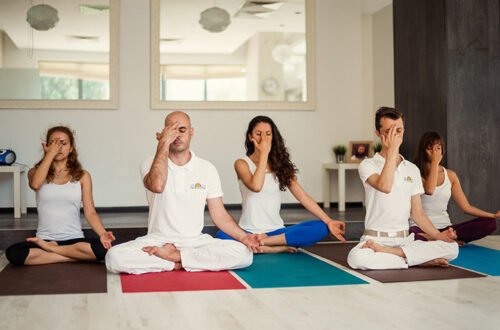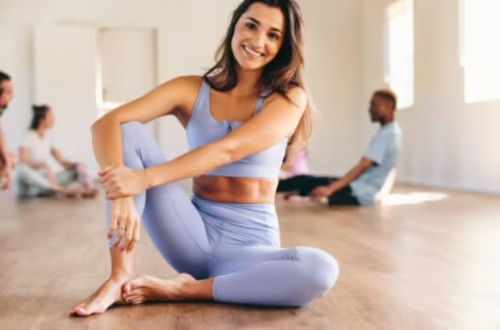Introduction to Creating Your Perfect Yoga Sanctuary
Imagine stepping into a space that instantly calms your mind, soothes your soul, and invites you to roll out your yoga mat with anticipation. A well-decorated yoga room can transform your practice, making it easier to find focus, peace, and mindfulness. Whether you’re a seasoned yogi or just starting, curating a dedicated space at home is a game-changer. In this article, we’ll explore five amazing yoga room decor ideas that blend functionality with serenity, ensuring your home practice feels like a retreat. From minimalist designs to nature-inspired havens, these ideas will inspire you to create a space that’s uniquely yours.
Why a Dedicated Yoga Room Matters
A dedicated yoga room isn’t just about aesthetics—it’s about creating an environment that supports your mental and physical well-being. Studies show that a clutter-free, calming space can reduce stress and improve focus, making your yoga practice more effective. By designing a room that reflects your personal style and intention, you’re more likely to stick to your routine. Let’s dive into five decor ideas that will elevate your home yoga space into a sanctuary of peace and mindfulness.
Idea 1: Minimalist Zen Retreat
A minimalist yoga room is all about simplicity, allowing your mind to focus without distractions. Think clean lines, neutral colors, and only the essentials. This approach creates a serene environment that feels open and airy, perfect for deepening your practice.
Choosing a Neutral Color Palette
Opt for soft whites, grays, or beiges to create a calming backdrop. These colors promote balance and tranquility, making it easier to slip into a meditative state. Paint your walls with a shade like Sherwin-Williams’ Refuge, a soothing blue-gray, to add depth without overwhelming the space. Keep accents minimal to maintain the zen vibe.
Essential Equipment for a Minimalist Space
- High-Quality Yoga Mat: Choose a solid-colored mat with good grip, like those from Manduka or Liforme, for comfort and stability.
- Single Decor Piece: A small Buddha statue or a simple candle can serve as a focal point without cluttering the space.
- Hidden Storage: Use built-in cabinets or under-bench storage to keep props like yoga blocks and straps out of sight.
Pros and Cons of a Minimalist Yoga Room
| Pros | Cons |
|---|---|
| Reduces mental clutter | May feel too stark for some |
| Easy to maintain | Limited personalization options |
| Enhances focus during practice | Can feel cold without warm accents |
Why It Works
Minimalism aligns with yoga’s core principle of detachment, helping you focus on breath and movement. I once transformed a corner of my bedroom into a minimalist yoga nook with just a mat and a single plant. The simplicity made every session feel like a reset, proving you don’t need much to create a sacred space.
Idea 2: Nature-Inspired Oasis
Bringing the outdoors inside can make your yoga room feel like a natural retreat. Plants, natural materials, and earthy tones create a grounding atmosphere that connects you to the earth, enhancing your practice’s restorative energy.
Incorporating Plants and Natural Elements
Add air-purifying plants like snake plants, peace lilies, or pothos to improve air quality and add vibrant greenery. Place them in terra cotta pots or wall-mounted planters for a touch of elegance. Driftwood, pebbles, or crystals can further enhance the natural vibe.
Choosing Earthy Materials
- Bamboo or Wood Flooring: These materials add warmth and a natural texture. Bamboo is sustainable and durable, ideal for a yoga room.
- Jute or Cotton Rugs: A natural jute rug grounds the space and provides a soft surface for seated poses.
- Wooden Shelves: Use them to store props or display small natural decor items like seashells or dried flowers.
Comparison: Plants vs. Artificial Decor
| Feature | Live Plants | Artificial Decor |
|---|---|---|
| Maintenance | Requires regular care | Low to no maintenance |
| Air Quality | Improves with air-purifying plants | No impact |
| Aesthetic | Natural, vibrant look | Can look less authentic |
| Cost | Moderate to high | Generally cheaper |
Personal Touch
When I added a small pothos vine to my yoga corner, it felt like I’d invited a piece of the forest into my home. The plant’s trailing leaves softened the space, and I swear my breathing felt deeper during practice. Try placing a low-maintenance plant near your mat—it’s like having a silent, green yoga buddy.
Idea 3: Bohemian Bliss
For those who love vibrant textures and eclectic vibes, a bohemian yoga room is the way to go. This style combines rich colors, global influences, and cozy elements to create a warm, inviting space that feels like a personal retreat.
Layering Textures and Fabrics
Use lightweight cotton curtains, Moroccan-inspired rugs, and patterned throw pillows to add softness and warmth. Hang a block-printed tapestry with mandala designs as a focal point on one wall. These elements evoke a sense of wanderlust while keeping the space cozy.
Adding Global-Inspired Decor
- Moroccan Lanterns: These cast beautiful, intricate light patterns, perfect for evening sessions.
- Woven Baskets: Store blankets or props in stylish wicker baskets for a functional yet decorative touch.
- Wind Chimes: Hang delicate chimes near a window for a soothing sound that enhances meditation.
Pros and Cons of a Bohemian Yoga Room
| Pros | Cons |
|---|---|
| Highly personalized and cozy | Can feel cluttered if overdone |
| Vibrant and inspiring | May require more upkeep |
| Encourages creativity | Not ideal for minimalists |
A Personal Story
My friend Sarah turned her spare room into a boho yoga haven with a colorful kilim rug and a string of fairy lights. She said the space felt like a hug every time she practiced, making her sessions more joyful. If you’re drawn to eclectic vibes, don’t be afraid to mix patterns—just keep the space functional for movement.
Idea 4: Modern Serenity with Mirrors
A modern yoga room with mirrors combines sleek design with practicality. Mirrors make small spaces feel larger, reflect natural light, and help you check your alignment during poses, creating a studio-like experience at home.
Strategic Mirror Placement
Install a large, full-length mirror on one wall to create the illusion of space and assist with form correction. Acrylic mirrors from brands like Clear Home Design are lightweight and durable, offering a cost-effective alternative to traditional glass. Position the mirror opposite a window to maximize light reflection.
Modern Decor Elements
- Sleek Storage: Use floating shelves to display minimal decor like crystals or a small statue.
- Dimmable Lighting: Install LED strips or dimmable wall sconces for adjustable ambiance.
- Neutral Accents: Stick to monochrome or soft pastel accents to keep the modern aesthetic clean.
Comparison: Mirrors vs. No Mirrors
| Feature | With Mirrors | Without Mirrors |
|---|---|---|
| Space Perception | Makes room feel larger | May feel more intimate |
| Practicality | Helps with pose alignment | Relies on body awareness |
| Cost | Higher initial investment | No additional cost |
| Aesthetic | Modern and sleek | Can be any style |
Why It Works
I once practiced in a mirrored yoga studio and loved how it helped me perfect my warrior pose. At home, adding a mirror to my yoga nook made it feel like a professional studio, boosting my confidence. If you’re tight on space, a mirror is a must for both function and style.
Idea 5: Sensory Haven with Lighting and Sound
Engaging multiple senses can elevate your yoga practice, making it more immersive and relaxing. This decor idea focuses on lighting, sound, and scent to create a multisensory sanctuary that feels like a spa.
Lighting for Ambiance
Use soft, warm lighting like Himalayan salt lamps or Edison-bulb string lights to create a cozy glow. Dimmable lights are ideal for transitioning between energizing morning flows and restorative evening sessions. Position lights strategically to avoid harsh glare.
Sound and Scent Elements
- Bluetooth Speaker: Play soft instrumentals or nature sounds to set the mood. A JBL Charge 5 is portable and offers clear audio.
- Essential Oil Diffuser: Use lavender or eucalyptus oils for a calming scent that enhances meditation.
- Tibetan Singing Bowls: Incorporate these for a meditative sound that deepens relaxation.
Pros and Cons of a Sensory Yoga Room
| Pros | Cons |
|---|---|
| Enhances relaxation | Requires careful placement of electronics |
| Engages multiple senses | Can be distracting if overdone |
| Spa-like experience | Additional cost for equipment |
A Personal Touch
Last winter, I added a small diffuser with sandalwood oil to my yoga space, and it transformed my practice. The subtle scent paired with soft music made every session feel like a mini-vacation. Try experimenting with scents and sounds to find what resonates with you—it’s like curating a playlist for your soul.
People Also Ask (PAA) Section
What colors are best for a yoga room?
Soft, neutral colors like white, beige, soft blue, or green promote relaxation and focus. Avoid bright, intense colors like red or yellow, which can be overstimulating. Earthy tones or pastels create a calming atmosphere ideal for yoga and meditation.
How can I make a small yoga room feel bigger?
Use mirrors to reflect light and create the illusion of space. Opt for light-colored walls and minimal decor to keep the room airy. Vertical storage, like floating shelves, and foldable furniture can maximize floor space for practice.
What are the must-have items for a yoga room?
A high-quality yoga mat, yoga blocks, and a strap are essential for practice. Add storage solutions like baskets or shelves for organization. Decor like plants, candles, or a small speaker can enhance the ambiance without cluttering the space.
How do I create a budget-friendly yoga room?
Repurpose existing furniture, like a low table for props, and shop second-hand for decor like rugs or baskets. DIY wall art or inexpensive plants like pothos can add charm without breaking the bank. Focus on one or two impactful elements to keep costs low.
Practical Tips for Setting Up Your Yoga Room
Creating a yoga room doesn’t have to be expensive or complicated. Here are some actionable tips to get started:
- Choose the Right Space: Pick a quiet corner, spare room, or even a section of your bedroom. Ensure it’s free from distractions like loud appliances or heavy foot traffic.
- Measure Your Space: A standard yoga mat is 72 inches long and 24 inches wide. Ensure you have enough room to move freely, ideally with a few extra feet for comfort.
- Declutter Regularly: A cluttered space leads to a cluttered mind. Use baskets or shelves to keep props organized and out of sight when not in use.
- Incorporate Personal Touches: Add items that inspire you, like a framed quote or a small statue, to make the space feel like your own.
- Test Lighting Options: Experiment with natural light, candles, or dimmable lamps to find what suits your practice best.
Where to Get Yoga Room Decor Supplies
- Yoga Mats and Props: Brands like Manduka, Liforme, and Gaiam offer high-quality mats and blocks. Check Amazon or local fitness stores for deals.
- Plants and Planters: Home Depot, Lowe’s, or Etsy have affordable, low-maintenance plants like snake plants or pothos.
- Lighting and Candles: BlissLights offers unique lighting solutions like Himalayan salt lamps or string lights. IKEA is great for budget-friendly options.
- Wall Art and Tapestries: Websites like Society6 or Saffron Marigold offer bohemian-inspired tapestries and prints. For custom frames, try Frame It Easy.
- Storage Solutions: IKEA and Target have stylish baskets and floating shelves perfect for organizing props.
Best Tools for Enhancing Your Yoga Practice
- Meditation Apps: Apps like Calm or Headspace offer guided meditations to complement your yoga routine. They’re perfect for beginners or those seeking variety.
- Smart Speakers: A JBL Charge 5 or Bose SoundLink provides clear audio for music or guided sessions.
- Aromatherapy Diffusers: Brands like Vitruvi or Muji offer sleek diffusers for essential oils, adding a spa-like touch.
- Yoga Pose Posters: Visual guides from Society6 or Etsy can inspire new poses and add a decorative element.
FAQ Section
Q: How much space do I need for a yoga room?
A: A standard yoga mat requires about 6 feet by 2 feet, but aim for an 8×8-foot area to allow free movement. For small spaces, use mirrors or vertical storage to maximize the area.
Q: Can I create a yoga room on a budget?
A: Absolutely! Start with a quality mat, add inexpensive plants, and use DIY decor like framed quotes. Shop second-hand stores or repurpose furniture to keep costs low.
Q: What lighting is best for a yoga room?
A: Soft, warm lighting like Himalayan salt lamps or dimmable LED strips creates a calming ambiance. Natural light is ideal, but use sheer curtains to control glare.
Q: How do I keep my yoga room clutter-free?
A: Use woven baskets, floating shelves, or cubby-style storage to organize props. Declutter monthly and keep only items that serve a purpose or inspire you.
Q: Are mirrors necessary in a yoga room?
A: Mirrors are optional but helpful for checking alignment and making small spaces feel larger. If you prefer a more intimate vibe, skip them and focus on decor that resonates with you.
Conclusion: Your Yoga Room, Your Sanctuary
Creating a yoga room at home is about more than decor—it’s about crafting a space that nurtures your mind, body, and soul. Whether you lean toward a minimalist retreat, a nature-inspired oasis, a bohemian haven, a modern mirrored studio, or a sensory sanctuary, the key is to make it yours. Start small with a mat and a plant, then gradually add elements that spark joy and focus. Your yoga room will evolve with your practice, becoming a sacred space where you can find peace amidst life’s chaos. So, roll out your mat, light a candle, and start designing your personal sanctuary today. Namaste





